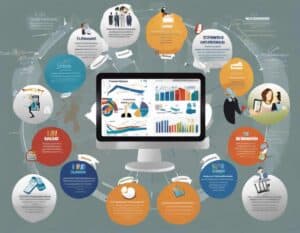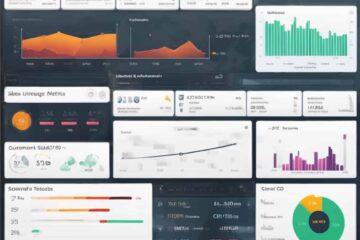With the ever-evolving landscape of field sales, businesses need to adopt innovative approaches to optimize their sales processes. Customer Relationship Management (CRM) systems have become a vital tool for streamlining field sales operations.
In this blog, we will examine crucial strategies that can help businesses maximize the potential of CRM to enhance their field sales efficiency and effectiveness.
- Key Takeaways:
- Customize CRM: Tailor CRM tools for field sales, enhancing organization and efficiency.
- Provide mobile access: Enable reps to access CRM on-the-go for real-time updates.
- Automate sales processes: Streamline tasks like lead gen and follow-ups, freeing up time for selling.
- Integrate with other tools: Connect CRM with email marketing or accounting software for centralized data.
- Track performance metrics: Utilize CRM analytics to monitor sales metrics and generate insightful reports.
Understanding Field Sales Challenges
Understanding the challenges encountered by field sales teams is essential for optimizing sales processes through CRM.
Identifying these obstacles is the first step towards devising successful strategies to overcome them and enhance sales performance.
Recognizing how inefficiencies can impede field sales is crucial for maximizing sales effectiveness. By understanding the repercussions of these inefficiencies, businesses can employ targeted CRM solutions to tackle these hurdles and drive revenue growth.
Common challenges faced by sales teams include lack of real-time data, inefficient communication, and difficulty in lead tracking. These obstacles significantly impact sales performance, resulting in missed opportunities and decreased productivity.
Implementing CRM solutions directly addresses these inefficiencies, streamlining field sales processes, fostering team collaboration, and ultimately improving sales outcomes.
Integrating CRM into Field Sales
The integration of Customer Relationship Management (CRM) software into field sales operations can significantly enhance efficiency, productivity, and sales opportunities.
Key Features of CRM for Field Sales
- Access: CRM enables real-time access to customer data, facilitating informed decisions and personalized interactions during field sales.
- Mobility: With mobile capabilities, reps can update data on-the-go, ensuring seamless communication and efficient sales processes.
- Management: CRM streamlines lead and opportunity management, empowering teams to prioritize tasks and focus on high-potential prospects.
- Automation: Task automation and reminders eliminate manual processes, enabling reps to dedicate more time to nurturing leads and closing deals.
- Optimization: Route optimization features help sales reps plan efficient travel routes, minimizing time spent on the road and maximizing face-to-face client interactions.
Recognizing the value of these features can help streamline field sales processes and drive better results.
And to better ensure a seamless integration of CRM into field sales operations, optimizing efficiency, enhancing productivity, and driving revenue growth, check out these actionable tips and strategic recommendations.
Best Practices for CRM Implementation
- Assess Needs: Before implementation, assess specific sales needs and goals.
- Understand Processes: Understand sales processes and customer relationships thoroughly.
- Involve Stakeholders: Involve key stakeholders from the outset for buy-in and alignment.
- Set Clear Objectives: Establish clear objectives for CRM integration to guide implementation.
- Provide Training: Offer comprehensive training and support to ensure effective usage.
- Automate Routine Tasks: Utilize CRM to automate lead management, scheduling, and personalized communication.
- Streamline Sales Process: Set up automated workflows to streamline sales processes and prevent leads from slipping through the cracks.
- Ensure Consistency: Automation saves time and ensures consistency and accuracy in sales efforts.
Enhancing Customer Relationships Through Data Analysis
In field sales, relationships are key, and CRM aids in enhancing them through data analysis.
By monitoring interactions, purchase history, and preferences, you can glean insights to customize your approach. This personalization strengthens bonds, boosts deal closure rates, and fosters loyalty.
CRM-driven data analysis facilitates customer segmentation, trend identification, and sales forecasting. Leveraging this data enables informed decisions on sales focus areas and effective revenue-generating strategies.

Training and Adoption Strategies
Implementing effective training and adoption strategies is essential for maximizing the benefits of CRM systems in field sales operations. Here are five strategies to ensure successful CRM adoption and utilization by your sales team:
1. Comprehensive Training Program
This ensures that sales teams are equipped with the knowledge and skills needed to effectively utilize CRM systems.
Here are actionable tips to develop a comprehensive training program for CRM adoption.
- Tailored Content: Customize training materials to align with the specific needs and goals of your sales team, focusing on relevant CRM features and functionalities.
- Interactive Learning: Incorporate interactive elements such as hands-on exercises and role-playing scenarios to enhance engagement and retention of CRM concepts.
- Continuous Evaluation: Implement regular assessments and quizzes to track team progress and identify areas for improvement, ensuring ongoing skill development.
- Stay Updated: Provide ongoing training sessions to keep team members abreast of new CRM features and updates, fostering continuous learning and adaptation.
A comprehensive training program not only equips sales teams with the necessary skills for CRM utilization but also ensures sustained proficiency and adaptability in an ever-evolving sales environment.
2. Highlight Benefits and Incentives
This involves emphasizing the advantages of CRM usage to motivate sales teams and encourage consistent adoption.
Here are actionable tips to effectively highlight benefits and incentives for CRM adoption.
- Clear Communication: Clearly communicate the benefits of CRM, such as improved efficiency and communication, to sales teams through regular meetings, emails, or presentations.
- Reward System: Implement a structured reward system, such as bonuses or recognition, to incentivize consistent CRM utilization and reinforce positive behavior.
- Celebration of Success: Recognize and celebrate successes achieved through CRM adoption, whether it’s reaching sales targets or improving customer satisfaction, to motivate team members and reinforce the value of CRM.
- Customized Incentives: Offer personalized incentives tailored to individual sales team members, such as additional training opportunities or flexible work arrangements, to further motivate and engage them in CRM usage.
Highlighting benefits and incentives boosts CRM adoption rates and fosters a positive and motivated sales culture, driving overall productivity and success in field sales operations.
3. Ongoing Support and Guidance
These involve providing continuous assistance to users encountering challenges or questions related to CRM usage, ensuring their needs are promptly addressed.
Here are actionable tips to provide effective ongoing support and guidance for CRM users.
- Responsive Assistance: Establish a system for users to reach out for help, such as a dedicated help desk or support team, to address inquiries and troubleshoot issues promptly.
- Personalized Coaching: Offer personalized coaching sessions for individuals or teams struggling with CRM usage, focusing on addressing specific challenges and improving proficiency.
- Knowledge Sharing: Foster a collaborative environment where team members can share tips, best practices, and success stories for using CRM effectively, promoting learning and skill development.
- Regular Check-ins: Conduct regular check-ins with users to gather feedback, address concerns, and provide additional training or resources as needed, ensuring continuous improvement and user satisfaction.
Ongoing support and guidance not only ensure smooth CRM adoption but also contribute to user confidence, proficiency, and overall success in leveraging CRM to drive sales performance.
4. User Proficiency Assessments
These involve regularly evaluating the skills and knowledge of CRM users to identify areas for improvement and tailor training accordingly.
Here are actionable tips to conduct effective user proficiency assessments for CRM.
- Tailored Assessments: Customize assessment methods to align with the specific functionalities and goals of your CRM system, ensuring relevance and accuracy in evaluating user proficiency.
- Personalized Training: Use assessment results to identify specific skill gaps and customize training sessions or resources to address these areas, maximizing the effectiveness of skill development efforts.
- Additional Resources: Provide supplementary resources such as online tutorials or user guides to support self-paced learning and reinforce concepts covered in training sessions.
- Peer Mentoring: Encourage peer-to-peer mentoring within the team to facilitate knowledge sharing, skill enhancement, and collaborative problem-solving, fostering a supportive learning environment.
User proficiency assessments help in identifying areas for improvement and enable targeted training interventions.
5. Continuous Improvement and Feedback
These involve soliciting input from CRM users, analyzing usage metrics, and incorporating feedback to enhance CRM functionality and user experience continuously.
Here are actionable tips to foster continuous improvement and feedback in CRM usage.
- Feedback Collection: Regularly solicit feedback from users about their CRM experience through surveys, suggestion boxes, or direct conversations, encouraging open communication and user engagement.
- Metric Analysis: Review CRM usage metrics, such as adoption rates and user activity, to identify patterns, trends, and areas for optimization, guiding strategic decision-making and system enhancements.
- Feedback Integration: Incorporate user feedback and insights gathered into ongoing training sessions and system updates to address user needs and preferences, ensuring continuous alignment with user expectations.
- Learning Culture: Foster a culture of continuous learning and improvement within the organization by providing opportunities for professional development, encouraging experimentation with new features, and celebrating successes, fostering innovation and adaptability.
Continuous improvement and feedback mechanisms drive iterative enhancements to CRM systems and empower users to contribute to the evolution of CRM functionality actively.

Final Thoughts | Revolutionize Your Field Sales
Efficient field sales operations are imperative for business success, and CRM systems are the linchpin to streamline these processes.
By deploying essential strategies like setting clear objectives, offering comprehensive training, harnessing mobile CRM tools, and fostering seamless communication, businesses can elevate their field sales game.
The integration of CRM promises heightened productivity, amplified sales figures, and fortified customer relationships.
Ready to elevate your field sales game? Invest in field sales management software today for unrivaled efficiency and success.



















